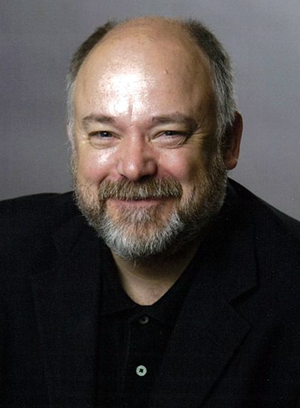Tech expert: CU needs to strategize, prioritize in education evolution
With 33 full degree programs being delivered entirely online and advances in technology in the classroom, the University of Colorado has set an impressive foundation for the use of technology in teaching. But technology is moving quickly and it’s imperative that CU not only keep up, but be part of the evolution, said Adrian Sannier, digital strategist and senior vice president of product at Pearson eCollege and professor of computing studies at Arizona State University.
There will be winners and losers as higher education institutions embrace and grow technological opportunities and accessibility for students. And, like comparing the 70s video game Pong to today’s Call of Duty, there are a lot of decisions to be made and a long road ahead before the university can be declared a winner in this evolving learning environment, Sannier said.
“These technologies have changed all major industries other than education,” Sannier told the University of Colorado Board of Regents on Tuesday. Higher education was a catalyst for teaching technology in the 90s, but it stalled. “When we think about technological approach to education, the idea that it would mechanize it, that it would standardize it, that it would crush out the human element – these are in minds that run institutions, in the minds of people who attend institutions and certainly on the minds of the faculty who are on the ground, the most responsible for delivering this education.”
Leading up to Sannier’s presentation, CU President Bruce Benson stressed the importance of CU’s role in the technological evolution inside and outside of the classroom. “I’m always interested in how we can do things better, provide better access to a better education to the students,” he said. “For me it’s really important that we get into this and really look at it carefully.”
Benson said Kathleen Bollard, vice president for academic affairs, has put together a technology task force of about 20 faculty to review what’s already in place, and move the university forward in a strategic direction. “I’m amazed how many things are already started,” Benson said. “We are on the cutting edge of what we do here. But we are putting together an inventory to find out all the different ways we do things and how we can do a better job.”
Private enterprises such as Google and Amazon capitalized and took over the field in advancing and perfecting technology. But now, Sannier said, higher ed must reboot and make its stand on the battlefield, providing students a wealth of access and opportunities, reaching every state and every nation. And it’s up to the university to best figure out its means to take advantage of what’s been developed and learned, he said.
“There are things that have happened the past several years that have come to a head this year that I think point to a very rapid evolution,” he said. “Technology that we ourselves can develop as an institution pales in comparison to the technology we can acquire from this exploding conglomeration of information. But finding ways to apply them is a major challenge and this is where the institutions energy, talent and money will turn.”
It’s up to CU to determine what it “wants to be great at” and then find the people to make it happen, Sannier said. The days of one brilliant professor planning and implementing a course might be at an end.
“You have to decide as an institution what you want to be great at and then find the partners,” he said. “It would be really hard to go it alone.
“We need to understand what we are trying to achieve, to narrow that focus, and determine the component that will do that for this university in the long run,” he said. “Once I had those things, I’d then start asking, ‘Who are my friends? How do I get this done? How do I put together a consortium to make that happen?’”
Sannier said a brick and mortar education – students thriving on a campus, making friends and growing to adulthood together – will always be of great value in higher education. “We’ll have to incorporate these technologies while nurturing what it is that makes institutions great. These centers of learning we’ve managed to construct -- the envy of the world -- we have to define how make them scalable to fit the students throughout their lives,” an ongoing resource for when careers change and evolve, he said.
“Who wants to go to school in your parents’ basement?”


